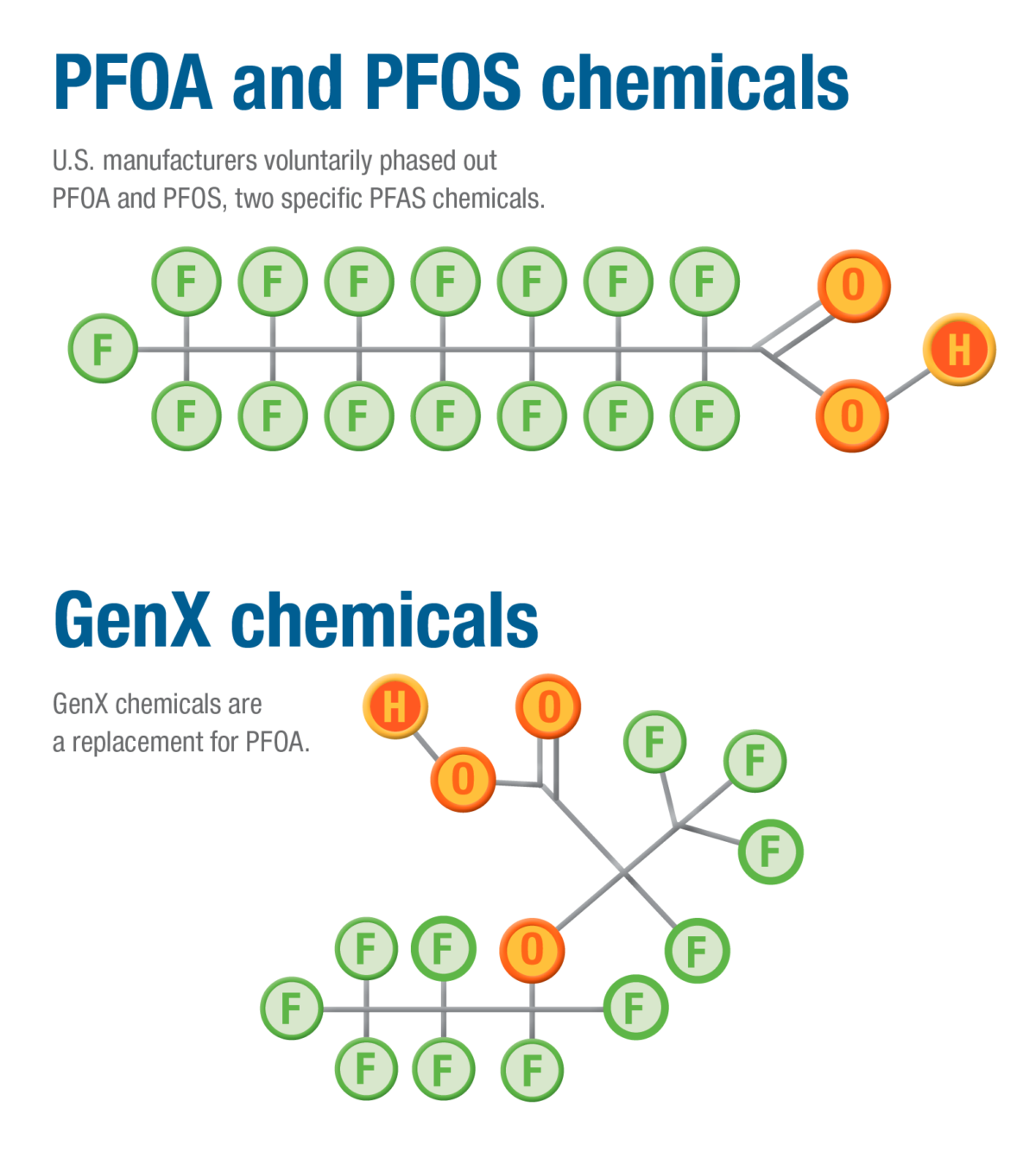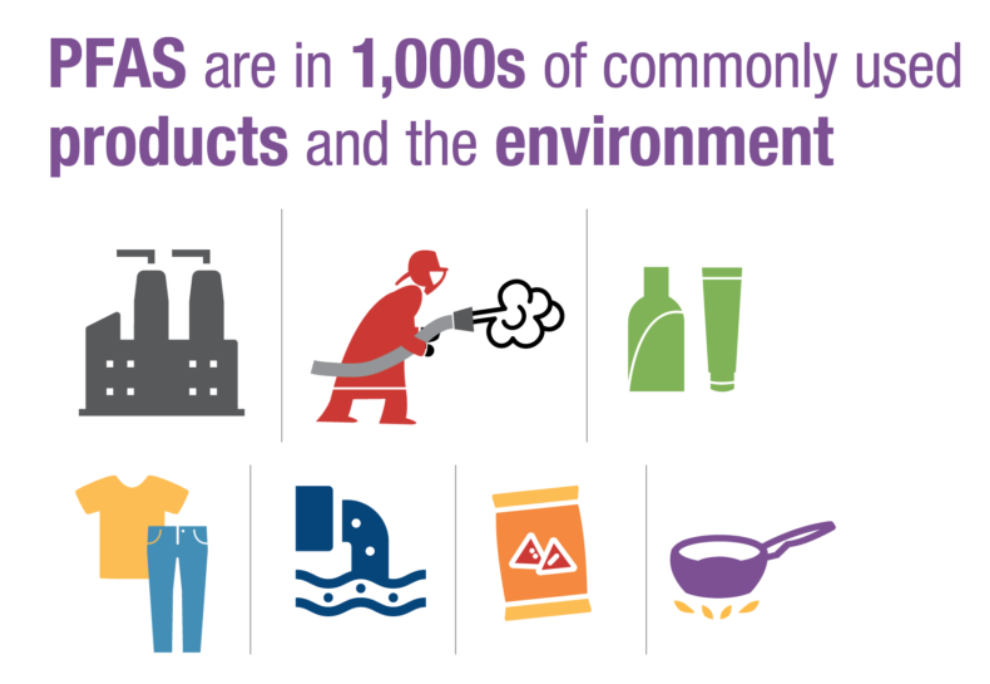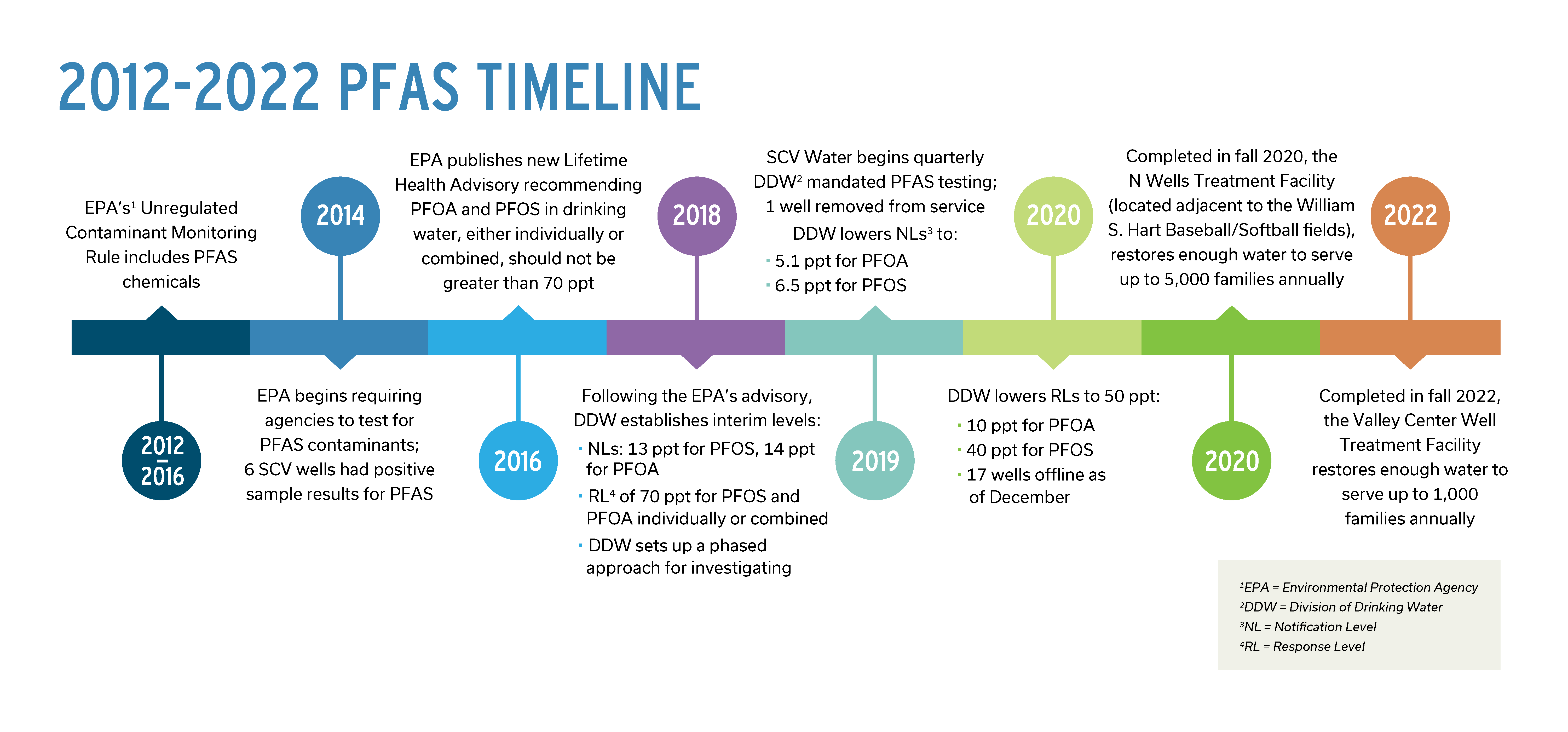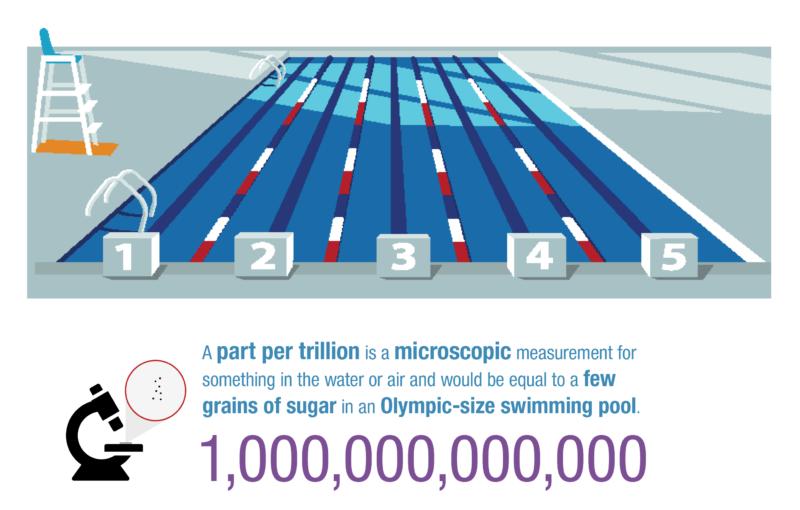PFAS Frequently Asked Questions
PFAS Frequently Asked Questions
Frequently Asked Questions
- How is SCV Water safeguarding drinking water from PFAS?
-
Our team relies on a three-pronged approach to addressing PFAS in the SCV:
- Testing: SCV Water proactively and voluntarily samples water from our active wells to ensure that water meets the state's regulations for PFAS. This testing is in addition to the thousands of water tests we run yearly to safeguard our water supply. If our wells exceed the state's response level, they are removed from service.
- Technology: As technology continues to advance, water agencies can detect ever-smaller amounts of chemicals in the water, and it allows state and federal agencies, like the EPA is currently developing, to revise water quality standards when needed. Our Agency has already taken immediate steps to address PFAS in our water through innovative strategies, including new treatment facilities and state-of-art lab equipment for testing.
- Transparency: We are committed to communicating important, up-to-date information on PFAS with our customers.
- What are PFAS?
-
Per- and polyfluoroalkyl substances (PFAS) are a group of man-made chemicals, which includes PFOA, PFOS and GenX. For more than 70 years, PFAS have been manufactured and used in a variety of industries worldwide.
According to the Environmental Protection Agency, exposure to certain PFAS can lead to adverse health effects in humans.

- Where are PFAS found?
-
These chemicals are found in thousands of commonly used products, such as non-stick cookware, shampoo, food wrappers, firefighting foam, clothing, paints and cleaning products. Additionally, these chemicals exist in the environment due to manufacturing, product use and discharge of treated wastewater.
Most people have measurable amounts of PFAS in their blood and are typically exposed to PFAS through eating food grown in contaminated water/soil or consuming food from packaging that contains PFAS; breathing air with dust particles from contaminated soil, upholstery, clothing; inhaling fabric sprays containing PFAS; or drinking contaminated water.

- How did PFAS get into our water?
-
Like many communities throughout the nation, the traces of PFAS in SCV Water are believed to be from consumer products and other industrial uses in the area. Investigating potential sources is one of the efforts we will undertake, as we also plan for treatment.
SCV Water is closely monitoring PFAS in our water supply. We test our water thousands of times per year to ensure it meets the state and federal water quality standards. If any of our wells exceeds PFAS response levels set by the state, we take immediate action and remove the well from service.
- How much of our water supply is affected?
-
SCV Water quickly responds to changing guidelines and regulations from the State Water Resources Control Board – Division of Drinking Water. Under the current response levels, last lowered in February 2020, 19 of the 42 active agency wells have been removed from service. This accounts for approximately 38 percent of the Agency's groundwater supply. In 2022, groundwater accounted for 38% of the water used in the SCV Water service area. SCV Water will continue to rely on its diverse water supply portfolio, including imported and banked water, to minimize customer supply impacts.
SCV Waters' team of water quality experts have already proactively invested in technology for treating and removing PFAS from our local groundwater supplies. Since 2019, the Agency has completed two projects (four wells). Additional projects are in phases of planning and construction and will come online at the rate of about one per year. https://www.yourscvwater.com/pfas/treatment-facilities
Restoring this local groundwater supply will also ensure SCV Water has a local, reliable water supply during drought.
- Timeline: PFAS in SCV Water

Click the image to see the full-size timeline. - What is SCV Water doing to treat and remove PFAS?
-
SCV Water has taken immediate steps to address PFAS in our groundwater, including proactive quarterly water sampling from all of our wells to ensure they are in line with state and federal standards. Unfortunately, the water-resistant properties of PFAS make them difficult to remove from water; however, there are proven treatment options.
Since 2019, the Agency has completed two projects (four wells). Additional projects are in phases of planning and construction and will come online at the rate of about one per year. yourSCVwater.com/pfas/treatment-facilities
Restoring this local groundwater supply will also ensure SCV Water has a local, reliable water supply during drought.
- How are SCV Water customers notified when PFAS is found in the water?
-
Our top priority is ensuring the water we are serving to our customers is safe and meets all state and federal water quality standards. When our water samples register above the state's notification levels, we share this information on our website, through our Water Currents e-newsletter, and SCV Water's annual Consumer Confidence (Water Quality) Report. You can sign up for our e-newsletter here.
In addition, this information is provided to the state’s Division of Drinking Water, the SCV Water governing board, the Santa Clarita City Council, and the Los Angeles County Board of Supervisors within 30 days of official results from the testing laboratory.
- Who Sets the Water Monitoring Guidelines for PFAS in Water? And how does it work?
-
At the federal level, the EPA regulates the safe levels for hundreds of compounds in drinking water.
Setting drinking water regulations is a lengthy process. PFAS are part of a family of up to 5,000 chemicals, and the EPA is focused on a small number of these compounds which remain in the environment due to their persistence and the inability to degrade.
There are no federal regulations for PFAS, however, in June 2022, the EPA announced new interim health advisory levels for PFOA (at 0.004 parts per trillion) and PFOS (at 0.02 ppt). These are not enforceable regulations. Rather, they serve as interim guidance before the EPA develops a formal regulation. This is not the first time the EPA issued a health advisory for PFOA and PFAS.
The health advisory level is the minimum compound concentration that may present health risks to an individual over a lifetime of exposure. Because there is uncertainty of the health effects associated with long-term exposure to PFOS and PFOA, the EPA sets lower health advisories. Sometimes, the advisory is lower than current analytical methods can detect.
In the State of California, our drinking water regulations are prepared by the Department of Drinking Water (DDW) in coordination with the Office of Health Hazard Assessment, and these agencies are also forging ahead in regulating PFAS. In 2021, the State proposed draft Public Health Goals for PFOA and PFOS. The low proposed levels are similar to EPA’s health advisories and will inform the State Water Board’s development of a drinking water standard.
And while PFAS and PFOA are explored at the state and federal levels, our water currently meets or surpasses all current state and federal standards for safety.
https://www.yourscvwater.com/pfas/pfas-national-drinking-water-quality-regulations
Notification Level (N.L.): A water agency must notify government officials when PFAS in the water exceeds the set N.L. In California, the N.L. for PFOA is 5.1 ppt; the N.L. for PFOS is 6.5 ppt.
Response Level (R.L.): Requires agencies to take action for readings above 10 ppt for PFOS and 40 ppt for PFOA. The revised response level guidelines will be compared to a quarterly running annual average (QRAA) sample results.
 The quarterly running annual average (QRAA) means the average sample results taken at an individual source during the previous four calendar quarters. For example, if sampling has just begun, such as in the first quarter, the first-quarter results would be divided by four. Therefore, the QRAA is re-calculated each quarter using the most recent four quarters of results.
The quarterly running annual average (QRAA) means the average sample results taken at an individual source during the previous four calendar quarters. For example, if sampling has just begun, such as in the first quarter, the first-quarter results would be divided by four. Therefore, the QRAA is re-calculated each quarter using the most recent four quarters of results.If the QRAA exceeds the response level, DDW requires SCV Water to notify each customer unless one of three actions are taken: the well is removed from service, the water is blended with other supplies to reduce the chemical concentration, or the chemical is removed through treatment.
- Did PFAS enter our water supply due to the merger of water agencies?
-
PFAS did not enter our water supply when we formed our new water agency in 2018. In fact, having one unified water agency has streamlined our resources, increased our water treatment options and increased efficiencies, which ultimately benefits our customers.
Creating SCV Water provided our agency the unique opportunity to remove barriers to improving water quality and reliability, including the ability to further blend groundwater and surface water and increase our treatment options. Pulling our resources together as one water agency also streamlines cost and provides numerous financial benefits to our customers.
- What happens next?
-
Our customers are our top priority. We are taking immediate steps to remove PFAS in our water and find out where it is entering our water supply and stop it.
We are accomplishing this through new strategies and proven treatment options and adhering to the state’s stringent water monitoring standards.
In addition, we have convened a "team" of key staff and outside experts. They are investigating potential treatment options and other strategies we can implement.
SCV Water has taken immediate steps to address PFAS in our groundwater, including proactive quarterly water sampling from all of our wells to ensure they are in line with state and federal standards. Unfortunately, the water-resistant properties of PFAS make them difficult to remove from water; however, there are proven treatment options.
We have completed two projects (four wells) since 2019. Additional projects are in phases of planning and construction and will come online at the rate of about one per year. https://www.yourscvwater.com/pfas/treatment-facilities
Restoring this local groundwater supply will also ensure SCV Water has a local, reliable water supply during drought.
SCV Water will also continue quarterly sampling of our wells to monitor water quality and ensure they meet all state and federal standards.
- Do I need to filter my water or drink bottled water?
-
Our water meets or surpasses all state and federal standards and is safe to drink. In fact, California has among the most stringent PFAS standards in the nation.
Some of our customers, however, choose to use water filters or drink bottled water because they prefer the taste. Certain water filtration systems can reduce levels of PFAS below the Environmental Protection Agency’s health advisory levels; however, the water our customers receive from SCV Water already meets those standards. SCV Water recommends that if our customers consider water filtration that they look for filtration systems that are “certified.”
The National Sanitation Foundation, an independent accredited organization that tests and certifies products to protect and improve human health, has conducted studies on filters that can remove PFOA and PFOS. A list of NSF-certified products can be found under the water and wastewater section of their website or by contacting them at info@nsf.org or 1.800.673.8010.
In addition, bottled water is not always a safer option than tap water. Tap water that comes to our home undergoes many more tests than bottled water. That is because of the national Safe Drinking Water Act, which requires water agencies to conduct extensive water quality testing by certified laboratories. Our drinking water is not only regulated by the national Safe Drinking Water Act, but also is regulated by the State Water Resources Control Board – Division of Drinking Water (DDW). Conversely, bottled water does not need to meet these same rigorous standards, is often tested less frequently than tap water, and the leaching of the plastic bottle the water comes in is not tested.
- When am I notified if there is PFAS found in the water?
-
When water sample results are above the state’s notification level, it is reported to the DDW, as well as the SCV Water governing board, the Santa Clarita City Council, and the Los Angeles County Board of Supervisors within 30 days of official results from the testing laboratory. Customers are notified through SCV Water’s annual Consumer Confidence (Water Quality) Report as well as the Agency’s website. You can also sign up to receive our e-newsletter here: https://yourscvwater.com/sign-up/.
If and when water registers above the state’s response level, the agency must notify each customer or remove the well from service. If you do not receive a notification, SCV Water may have already removed the contaminated source from its supplies, blended it with other supplies to reduce the concentration of the chemical or treated the contaminated water to remove the chemical.
- My home is close to a well that is now offline due to PFAS. Does that mean I was receiving water with a higher amount of PFAS than other customers?
-
No. Your proximity to a well does not necessarily correspond to that as your water source. The water we deliver to our customers is collected locally from groundwater, as well as imported from the State Water Project, and both are often blended together. The percentage of water blended from these sources may vary depending on the time of year. More importantly, our water goes through thousands of tests each year to ensure that it meets or surpasses all water quality standards before reaching our customers, so if PFAS levels reach a certain point, the well is removed from service.
- How can I learn more about PFAS and water quality in the SCV?
-
Our knowledgeable team is here to answer your questions. We have many ways for you to learn more:
- Visit PFAS section
- Sign up for SCV Water’s e-newsletter here
- Follow us on social media @scvwater
- Call 661-388-4980
